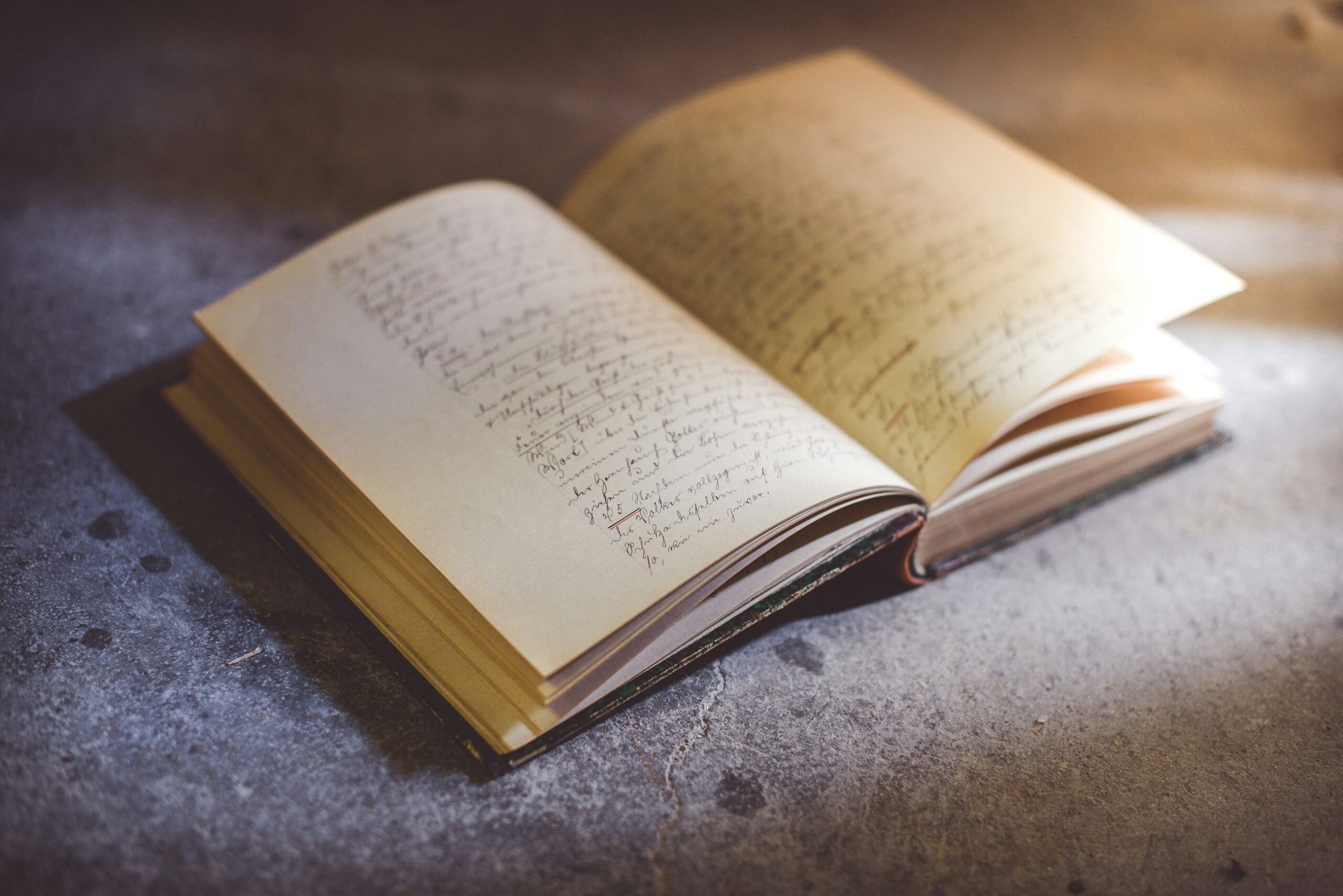English Drama and Its Classification

What is a Drama?
Drama is the most popular form of English Literature. William Shakespeare, the greatest persona in English Literature, is widely famous for his exquisite skill of writing dramas.
A good play distributes a sweet fragrance in the human mind. Sometimes it reflects the society very minutely and sometimes drama becomes the notion-breaker, it shows a new path to the society.
DEFINITION
- The common alternative name for a dramatic composition is Play, a work meant to be performed on stage.
- The form of composition designed for performance in the theatre in which actors take the roles of the characters, perform the indicated actions and utter the written dialogues.
- This is a broad literary genre that includes various types like Comedy, Tragedy etc.
- If a drama is not written to be performed but to be read, it is known as Closet Drama.(Milton’s “Samson Agonistes”)
In poetic drama, the dialogue is written in Verse which in English is usually blank verse and in French is the Alexandrine(twelve syllables lines).
Almost all heroic dramas of the English Restoration period were written in Heroic Couplets(iambic pentameter rhymed in pairs)
MAJOR FORMS OF DRAMA
- Morality plays, Mystery Plays, Miracle Plays, Interludes
- The Tragedy
- The Comedy
- The Tragi-comedy
- The Romantic Comedy
- The Comedy Of Humors
- The Comedy of Manners
- The Satiric Comedy
- The High Comedy
- The Low Comedy
- The Farce
- The Masque
- The Poetic play
- The Closet Drama
- The Dramatic Monologue
- The Problem Play
- The One-Act Play.
1. Mystery and Miracle Plays
- These are all types of late-Medieval drama, written in a variety of verse forms.
- Miracle Play has its subject matters on the lives of the saints.
- It picturized Old Testament Myths, the lives of saints and prophets, divine miracles performed by various Saints and Christ and the Day of Judgement.
- This form developed rapidly in the 13th century despite violent opposition from ministers of the Church.
- Mystery plays focus on the stories of the Bible, primarily on the topics of Creation, Fall and Resurrection. This kind of play was quite popular.
- Like Miracle Plays, the Mystery Plays were performed at previously announced town squares and streets to ensure the maximum number of people could watch them.
- Sometimes individual plays were so interconnected that they formed a cycle depicting events from the Bible ranking from the creation to Doomsday.
- Some of the cycles took the name of the town where they became famous and are today known as the Coventry Cycle, Chester Cycle etc.
Morality Play
- The morality play is an Allegory in dramatic form.
- Most of these plays had religious topics picturizing the spiritual struggle of an individual against the personified Vices and evil forces.
- Though popular during the Medieval era but not frequently found after the sixteenth century.
- “Everyman“(1500), where Everyman realizes that none but Good Deeds will accompany him in his journey to meet Death.
Here Everyman, Good Deeds, and Death all are personified characters.
Interludes
- In Latin, Interlude means ‘between the play‘. It remained popular during the Medieval age.
- A brief entertainment that was dramatized between the courses of a feast or between the acts of a larger play.
- John Heywood was the greatest practitioner of this particular dramatic form. His “Four PP“(e.g. the Palmer, the Pardoner, the Pothecary, and the Paddler who all engage in a lying contest) is a brilliant example of Interlude play.
2. The Tragedy
A form of drama that developed from the Greek rituals in which a goat was sacrificed before Dionysus.
It was serious and often sombre in nature, written in prose or verse and focused on a character whose life typically ended in disaster.
Definition
According to Aristotle,
“The imitation of an action that is serious and also, as having magnitude, complete in itself.”
An Aristotelian tragedy shows the struggles of a noble and courageous hero/heroine who is good but faces doom because of some error in judgment (hamartia).
Tragedy employs a dignified and serious tone to show the suffering of the hero in a manner that ensures that pity and fear in evoked finally leading to Catharsis(purged) of pent-up emotion.
The Middle Ages did not attach much importance to the Classical models.
In the Renaissance time, England experienced a renewed interest in Classical Literature and the rules of the classical tragedy were reinstated.
A more precise and detailed discussion of the tragic form properly begins with Aristotle’s classic analysis in the “Poetics“(Fourth century BC).
Heroes of Modern tragedy are sensitive individuals drawn from the rank of ordinary people who suffer because of the inhuman nature of modern society.
Types of Tragedy
a. Senecan/ Elizabethan Revenge Tragedy:
It is especially has a huge impact ultimately nurturing the entire genre of Elizabethan revenge tragedy.
Shakespeare’s “Hamlet“, Marlowe’s “The Jew of Malta“, and Thomas Kyd’s “The Spanish Tragedy” are popularly considered the zenith of this dramatic form.
b. Domestic Tragedy/bourgeois:
It was written in prose and presented a protagonist from the middle or lower social ranks who suffers a commonplace or domestic disaster.
Example: George Lillo’s “The London Merchant”.
3. The Comedy
A literary work that leads to amusement. Generally, it is employed to refer to dramatic works that entertain and amuse, evoke laughter and usually have a happy ending.
Aristotle in poetics distinguishes it from Tragedy stating that it deals with ordinary characters and everyday situations amusingly.
From its inception, Greek Comedy was linked with fertility rites and the worship of Dionysus. From Aristophanes onwards, it came to be primarily associated with drama. During the Middle Ages, the interludes often used elements of comedy.
Nicholas Udall’s “Ralph Roister Doister“(1553) is generally regarded as the first English dramatic comedy.
In his “An Apology for Poetry“(1595), Sidney defines comedy in the following manner,
“Comedy is an imitation of the common errors of life, which he represented in the most ridiculous and scornful sort that may be; so that it is impossible that any beholder can be content to be such a one.”
A large variety of dramas are covered by the term comedy.
4. The Tragi-Comedy:
A literary term refers to plays that combine tragic and comic elements. It includes both people of high degree and people of low degree.
A happy ending is reached in such plays despite the general tragic tone.
The name tragi-comedy is sometimes also applied more loosely to play with double plot, one serious and the other comic.
Examples: Shakespeare’s “The Tempest“, and “The Winter Tales“. Beaumont and Fletcher’s “A King and No King” etc.
History
Plutus derived the term to refer to his play ‘Amphitruo‘ which had kings, gods and servants as unusual accumulation of characters.
The term has since come to refer to plays that intermingle tragic and comic elements.
5. The Romantic Comedy
- A broad literary term used to refer to the drama that centres around the theme of love.
- In the end, such works typically unite the lovers to facilitate a happy ending e.g. Shakespeare’s “Twelfth Night“.
- This genre was developed by Elizabethan dramatists on the model of contemporary prose romances such as Thomas Lodge’s “Rosalynde“.
The most interesting fact is that in Shakespeare’s Romantic Comedies, the women are often superior to men, while in tragedies he creates such nightmare female figures as Goneril, Regan, and Lady Macbeth (Linda Bamber’s “Comic Women, Tragic Men: A Study of Gender and Genre in Shakespeare” (1982))
6. The Comedy of Humours
- A form of satiric comedy that became popular during the late 16th century and the early 17th century.
- The term was developed by Ben Jonson, the most famous practitioner of the Comedy of Manners.
- The belief is that the balance of the four major fluids of the body — blood, phlegm, yellow bile, and black bile, determines an individual’s health and temperament.
A perfect balance of these four major fluids gives a healthy and happy human life.
A moderate imbalance of these four body fluids was thought to be the direct cause of all diseases as well as behavioural and emotional inclinations.
Pain occurs when one of the substances presents either deficiency or an excess or is separated in the body and not mixed with others.
- In keeping with the predominant humours the individual was Sanguine(from Latin ‘sanguis’ means blood), Phlegmatic(phlegm), Choleric(yellow bile) and Melancholic(black bile).
- Comedy of Manners is predominantly didactic.
- In Jonson’s Comedy of Humours, each of the major characters has a preponderant or predominant humour that gives him eccentricities of disposition.
- Ben Jonson’s “Every Man in His Humor” is a classic example of this form.
7. The Comedy of Manners
A type of Restoration comedy that generally centers around love, and intrigues of fashionable society.
- It deals with the relations and intrigues of men and women living in a sophisticated upper-class society.
- It frequently mocks stock characters(such as the clever servant, old and stodgy parents, and the wealthy rival) that fail to live up to the standards of polite society.
- Witty repartee, elegance and sophistication are dominant features of this genre.
Though influenced by Ben Jonson’s Comedies these are lighter and more vivacious in tone.
Instances. George Etherege’s “The Man of Mode”(1676), William Congreve’s “The Way of the World”(1700), Oscar Wilde’s “The Importance of Being Earnest”(1895) etc.
8. Satiric Comedy
Sometimes it is called ‘Corrective Comedy’. It is a form of comedy that ridicules political policies as philosophical doctrines or literary matters.
- It desires to ridicule and correct human vices and shortcomings.
- The early master of the Satiric Comedy was the Greek Aristophanes (c. 450-c.385 BC).
- Ben Jonson, Shakespeare’s contemporary wrote Satiric Comedy e.g. “Volpone“, “The Alchemist” and Sheridan’s “The School for Scandal“(1777) etc.
9. High Comedy
George Meredith in a classic essay “The Idea of Comedy”(1877) evokes High Comedy as ‘Intellectual Laughter’.
It is thoughtful laughter from spectators who remain emotionally detached from the action.
Meredith finds its highest from within the Comedy of Manners, in the combat/ duel between such intelligent, highly verbal, well-matched lovers as Benedick and Beatrice in Shakespeare’s “Much Ado About Nothing”, and Mirabell and Millamant in Congreve’s “The Way of the World”(1700)
10. Low Comedy
- It is the opposite of High Comedy.
- A bawdy form of comedy is employed at times to generate comic relief.
- It has no intellectual appeal but undertakes to arouse laughter with jokes or gags and by slapstick humour and clownish physical activity.
- Several sections of Wycherley’s “The Country Wife”(1675) can be considered examples of Low Comedy.
11. The Farce
A type of Comedy designed to provoke the audience to simple, hearty laughter ‘belly laughs’ in the parlance of the theatre.
A form of Low Comedy that evokes laughter through ridiculous situations, buffoonery, and crude and sometimes bawdy dialogue.
Farce is usually an episode in a more complex form of Comedy. It does not care much for subtle comic humour.
HISTORY
- In classical Literature, elements of Farce are found in the plays of Aristophanes and Plutus.
- The first play that can be called Farce are found in French drama in the Middle Age.
- John Heywood was the first to introduce this form into England.
- His comic Interludes nearly became a genre by themselves, e.g. “The Four P’s”(1545).
- Farcical episodes were quite common in Restoration Comedy and 18th-century comedy.
- Farce is also a frequent comic tactic in the theatre of Absurd.
In England, Pinero is considered to be the originator of the fully developed Farce in the 19th century in his plays like “The Schoolmistress”(1886), and “Dandy Dick”(1887).
The form continued to flourish in the 20th century in plays like Somerset Maugham’s “Home and Beauty”. Tom Stoppard’s “The Real Inspector Hound”(1968).
Many of the movies by such comedians as Charlie Chaplin, Buster Keaton, and Woody Allen are excellent farce.
12. The Masque
- An elaborate form of courtly entertainment that combined drama, music, song, dance, splendid costuming, and stage spectacle.
- It has an infrequent plot focus around mythological or Allegorical figures.
- The speaking characters, who wore masks were often played by amateurs who belong to the courtly society.
- The play ended with a dance in which the players unmasked and were joined by the audience.
HISTORY
This dramatic form was inaugurated in Renaissance Italy and flourished in England during the reigns of Elizabeth 1st, James 1st, and Charles 1st.
The closing of the theatres in 1642, brought a sudden halt to such performance. With time, Masque became more popular and went on to acquire literary and artistic purposes.
In the hands of Jonson and Inigo Jones, the form achieved its greatest success.
Instances:
The Fourth Act of Shakespeare’s “The Tempest“(1611) has a memorable masque sequence. Milton’s “Camus” is also considered an excellent instance of this form.
13. The Poetic Play
A form of drama which is written in verse form.
Example: Wordsworth’s “The Borderers”, Byron’s “Manfred”, “Cain” etc.
14. Closet Drama
It is written in dramatic form with dialogues indicating settings and stage directions but is intended by the writer to be read rather than to be performed.
Instances: Milton’s “Samson Agonistes”, Shelley’s “Prometheus Unbound”, Hardy’s “The Dynasts”, Byron’s “Manfred” etc.
15. Dramatic Monologue
- A Monologue is a lengthy speech delivered by a single person.
- In a play, when a character utters a monologue that expresses his or her private thoughts, it is called Soliloquy.
- In Dramatic Monologue, a single speaker who is patently not the poet delivers the monologue.
- The speaker has one or more than one listener present in the poem who does not speak but the progress of the speech registers their reactions.
- The speaker usually stands at critical moment of his existence and may expose unintentionally certain aspects of his or her character.
- Robert Browning was the most famous practitioner of this form in English Literature.
Instances:
“Soliloquy of the Spanish Cloister”, “Andrea Der Sarto”, “My Last Duchess”, “Fra Lippo Lippi”.
The form continued to be flourished by later writers e.g. T.S. Eliot’s “The Love Song of J Alfred Prufrock” is a brilliant Dramatic Monologue.
16. The Problem Play (Thesis Play/ Propaganda Play)
A drama that deals with a social problem and not only raises public awareness but even tries if possible offer a solution.
The issue may be the inadequate economy, scope, and dignity allotted to women in the middle-class 19th-century family(Ibsen’s A Doll’s House) or the morality of prostitution as the crisis in racial and ethnic relations in the present day.
A subtype of the modern problem play is the discussion play, in which the social issue is not included in the plot but expounded in the give and take of a sustained debate among the characters.
The term Problem Play is sometimes applied to a group of Shakespeare’s plays, also called ‘Bitter Comedies’ especially “Troilus and Cressida”, “Measure for Measure”, “All’s Well That End’s Well ” which explores the dark side of human nature.
Example: G.B.Shaw’s “Widower’s House”, “Mrs. Warren’s Profession” etc.
17. One-Act Play
- A dramatic work of a single act.
- The roots of One-Act plays can be traced or considered to be Miracle and Mystery plays.
- Brevity is the central importance of One-Act plays.
- Because of its length, it generally focuses on a single episode and has few characters.
- Synge’s “Riders to the Sea“(1904) is an excellent form of one-act play.
References
“Anthem Dictionary of Literary Terms and Theory” by Piyas Chakrabarti. “A Glossary of Literary Terms” by M.H. Abrams and G.G. Harpham.” History of English Literature” by Edward Albert. “A History of English Literature” by Rabindranath Chakraborty. U.G.C NET/SET/JRF Book. en.wikipedia.org



0 Comments